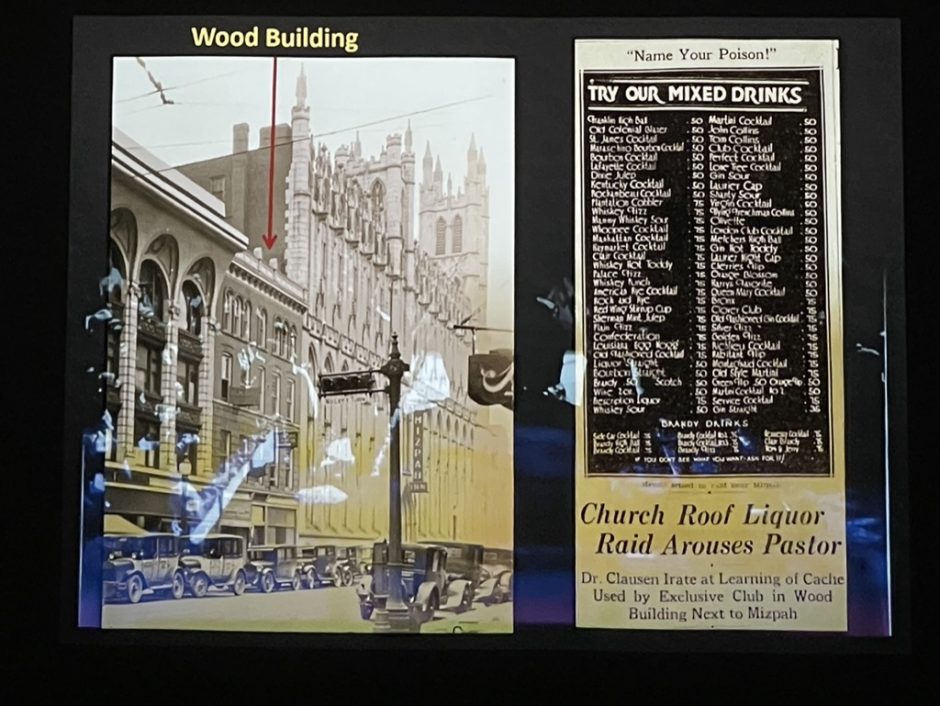Syracuse was one of the leaders in U.S. brewing at the turn of the 20th century.
SYRACUSE, N.Y. (NCC NEWS) — When Robert Searing finished his presentation on the history of beer in Syracuse, he implored his audience to go drink one.
“Go get yourself a nice cold beer, I know I will,” he said.
It’s a fitting call to action from Searing, who, sip-by-sip, could tell you how your beverage was made, and why Central New York was once a national hub for brewing.
Searing, the curator of history at the Onondaga Historical Association, traced the evolution of local beer production, from prominence to Prohibition during a presentation at the Cicero branch of the Northern Onondaga Public Library on Wednesday night.
“We’ve got a lot of great history in this region, if we can bring it here [to the library], then that’s a great thing,” said librarian Sue Hansen.
The Haudenshonee didn’t make fermented beverages, so it was the German and English immigrants who took advantage of the ideal conditions for beer production in Central New York to kickstart the boom in brewing in the later half of the 19th century.
“You’ve got the [Erie] Canal, you’ve got the immigration centers, you’ve got the freshwater, you’ve got the availability of ice, you’ve got the agricultural base,” said Searing. “It is a perfect storm for beer drinkers.”
The first record of wide-scale brewing in Central New York is in 1798, and by 1834, the first known brewery in Syracuse was founded close to where the famed Irish pub Kitty Hoyne’s now pours its drinks downtown.
Searing discovered that some breweries had taps coming out of their walls, so that those who were especially thirsty could fill up their growlers without even having to step inside. One local saloon popularized the salt potato because its menu consisted of nothing else but the new-fangled regional dish and beer.
Beer production in Syracuse peaked during the 1890s, according to Searing, with the popular brewery J&G Greenway’s churning out more than 100,000 barrels a year. For reference, Searing shared that the popular Middle Ages Brewing Company in Syracuse, which was founded in 1995, produced a mere 10,000 barrels in its best year.
“The amount of beer that was being manufactured and brewed in this community and being consumed was staggering,” said Searing.
Central New York was the center of hop cultivation in the United States around the turn of the century, rivaling Bavaria. Around the turn of the century, Syracuse was home to about 20 breweries that employed 500 to 600 people, making it one of the region’s biggest industries.

But the kegs ran dry after Prohibition was instituted in 1920. Breweries pivoted to making non-alcoholic “near beers” and root beer, but just one of Syracuse’s five major breweries survived until the repeal of Prohibition in 1933, a demise that was mirrored across the country.
“Prohibition destroys American brewing,” said Searing. “It is a windfall for the biggest brewing companies in America. Those brewing companies that still dominate the domestic market were the ones that managed to survive prohibition because of the sheer size and economies of scale.”
Anheuser-Busch, which emerged as the top brewer in the United States after Prohibition, now operates the largest brewery in New York State, located in Baldwinsville.
But Searing is optimistic about the future of local brewing, citing the roughly 50 breweries in Onondaga County. There are almost 10,000 breweries operating across the country, according to the Brewers Association — more than there ever was before prohibition.
“For all of the things that made Syracuse a brewing center in the 19th century,” said Searing. “We’re back and we’re better than ever.”
